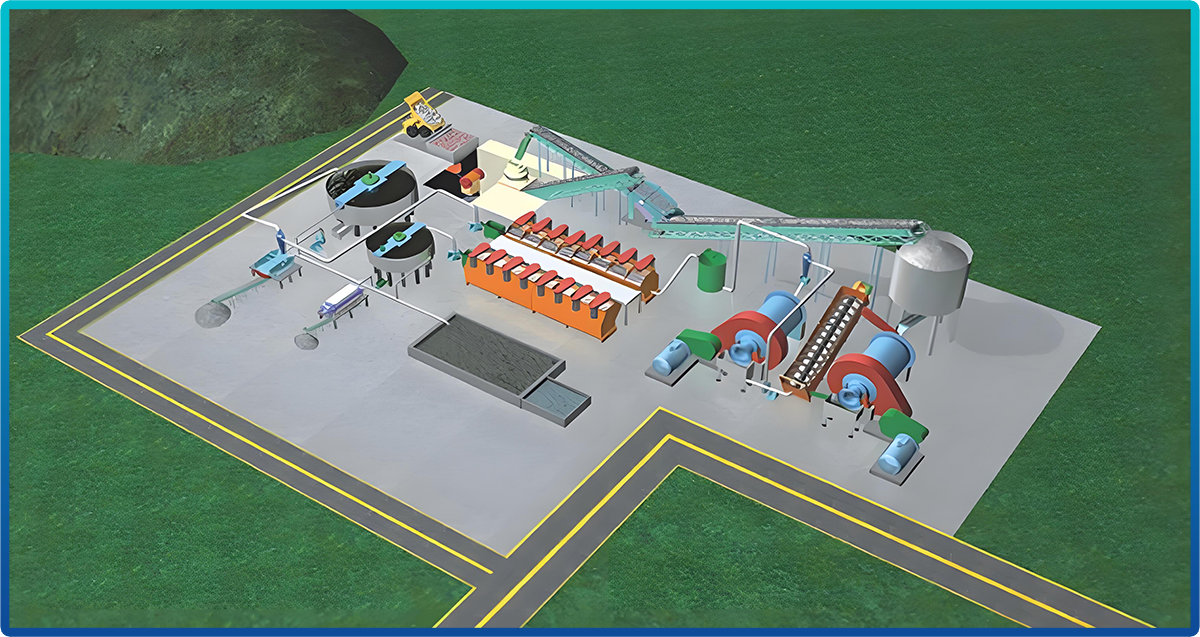Efficient Copper Extraction: Mastering the Flotation Process
Looking for copper? This guide explores key signs and prospecting methods to help you discover copper ore deposits.
Types of Copper Deposits:
- Porphyry copper (most common)
- Copper-nickel sulfide
- Massive sulfide
- Layered copper (volcanic, sand, shale, conglomerate)
- Carbonate type
- Skarn type
- Hydrothermal vein
Prospecting Signs:
- Copper Oxide Minerals: Look for green malachite, blue azurite, red copper ore, or black chalcocite. These vibrant minerals often indicate copper presence.
- Characteristic Plants: Specific plants like toothbrush grass (Yangtze River) or purple-flowered plants (Yunnan) can signal potential copper deposits.
- Rock Alteration: Combinations like silicification, sericitization, or potashization in reddish rocks can be promising signs.
- Geological Features: Target areas with volcanic rocks, porphyry intrusions, light-colored sandstones, or specific rock formations like stromatolites.
- Porphyry Copper: This large-tonnage, low-grade ore type is preferred for open-pit mining. Look for secondary enrichment zones and high gold, silver, or molybdenum content for better economic potential.
- Geochemical Anomalies: Analyze soil or rock samples for elevated copper levels, often accompanied by molybdenum, gold, silver, or other metals.
- Geophysical Prospecting: Techniques like induced polarization, resistivity, gravity, and magnetics can directly or indirectly locate copper ore bodies and related geological structures.
- Mineralization Series: Iron ore deposits, especially magnetite, can sometimes indicate underlying copper deposits.
- Comprehensive Prospecting: Copper often co-exists with metals like lead, zinc, tungsten, molybdenum, or silver. Look for these elements during exploration.
Remember:
- Consulting a professional geologist is recommended for serious copper exploration.
- Environmental regulations and permitting are crucial for any mining activities.
By using these methods and staying observant, you can increase your chances of finding copper ore!
Copper Ore Flotation Process: From Crushing and Screening to Copper Concentrate
Copper ore beneficiation is a complex process that typically involves crushing, screening, grinding, classification, and flotation. Flotation is the core process in copper ore beneficiation, used to separate copper minerals from gangue minerals to produce copper concentrate.
There are three main types of copper ore flotation:
- Selective Flotation: When copper ore contains multiple valuable minerals, selective flotation is used to separate these minerals one by one to obtain single mineral concentrates. This method is suitable for minerals with significant property differences.
- Bulk Flotation: Bulk flotation involves floating multiple valuable minerals simultaneously to obtain a bulk concentrate, followed by further separation. This method is suitable for minerals with similar properties.
- Role of Flotation Equipment: Flotation equipment provides intense agitation to keep particles in suspension, promote reagent dispersion, and facilitate the attachment of mineralized bubbles to particles, thereby achieving mineral separation.
Simplified Flotation Process:
- Crushing and Screening: Breaking large ore pieces into suitable particle sizes.
- Grinding and Classification: Grinding ore to fine particles and classifying them by size.
- Flotation: Adding various reagents to the pulp to utilize the differences in surface properties of minerals, allowing copper minerals to combine with bubbles and float to the pulp surface, forming foam, and thus separating from gangue minerals.
If you have any questions about the above content or copper ore processing and want to know more info, please contact the online service or submit your message.
Whatsapp:+86 133 1927 7356
Email:[email protected]



